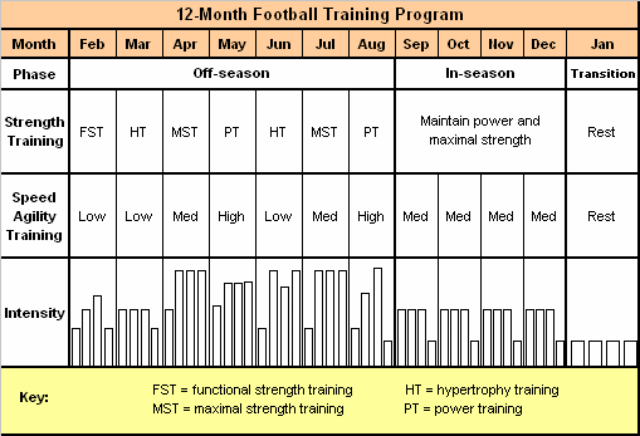A complete soccer training program requires some planning. For this planning, first of all, discipline and desire are required. These studies will be beneficial to improving your football. So, how do make a football training program? I will try to give various information, especially for young football players who aim to do individual work…
Footballers are among the best athletes in the world, thanks to their rigorous training regimens. Above all, a soccer training program should be tailored to your specific requirements. A solid fitness assessment should serve as the foundation for an effective soccer training program. Sports conditioning is a critical factor in football. Because in-game endurance, physical strength, and speed improvement are all important factors.
How to Prepare a Football Training Program?
A football training program lasts one year. Even if the in-season rivalry only lasts from September to April, the football training schedule applies to all levels of football players. Most football players have a limited amount of time to train. You may not have the time (or desire) to train six days a week. First and foremost, your goal should be to maximize your work by utilizing your free time. You can’t fail to improve your football if you do this.
Football training plans can be developed on a daily, weekly, or annual basis. Furthermore, not regularly planning training or not being efficient at the desired level can cause a variety of disruptions, particularly during a match.
Divide Football Training Program into 3 Phases
Even if you only have football conditioning a few days a week, you should still adapt and change these sessions over the course of a year. For the more ambitious players, this periodization system is the ONLY way to combine all the necessary training elements without overtraining.
Here are the three phases of a football training program:
- Pre-season phase – 7 months
- In-season phase – 4 months
- Transition phase – 1-2 months
A football training program lasts one year. Even if the in-season rivalry lasts only from September to more than half a year, there is still time to plan a football training program! This is due to the fact that peak physical strength and power take time to develop. The football training schedule is in effect in April.

Pre-Season Phase of Football Practices
The off-season or pre-season is by far the most important phase of the annual plan. The goal is to maximize the physical strength of the football player just before the start of the season so that he can perform at his best. Because this phase is so long, you must break it up into smaller loops, also known as macro loops. Each macrocycle can last anywhere from 3 to 6 weeks (for simplicity, we’ll assume each cycle lasts a calendar month). Training objectives and methods differ in each cycle for a significant reason.
To begin with, adjusting intensity and volume helps to avoid overtraining and burnout.
Second, different aspects of fitness are built on top of each other. For instance, explosive power conditioning comes after maximum strength training, which comes after functional strength training.
Strength and Power Conditioning
Strength training should be avoided for at least a few weeks during the transition period (see below). Consider a functional strength program designed to correct imbalances caused by a strenuous soccer training program.
This functional strength program will most likely begin very early in the pre-season and is intended to prepare your body for the upcoming more difficult sessions. Football players are among the few athletes who can benefit from a hypertrophy program. This type of weight training is intended to build muscle mass. However, contrary to popular belief, larger muscles are not always stronger muscles.
In football, this type of hypertrophy training should be limited to the strength training program. Maximal strength training is also important and results in adaptations that differ significantly from bodybuilding.
During the hypertrophy phase, coaches may want to place more emphasis on certain players than others. They can, for example, divide their pre-season into only four phases: functional/hypertrophy/maximum strength/strength.
Finally, following the development of muscle mass and maximum strength, conversion to sport-specific power is crucial. It is power (not maximum power) that is most beneficial to footballers. The cycle just before the start of the season should focus on developing the highest strength.
Speed and Agility Training
Work in early pre-season speed and agility is voluntary and should be light. Excessive running and interval training can reduce muscle mass and maximum strength development. Light aerobic training may be more effective as an active recovery tool than intense endurance sessions.
Pre-season speed, agility, and intense interval training should be prioritized. If you plan your soccer training program ahead of time, your quickness and agility should be at their peak as the season begins.
Flexibility Training
Do not overlook your adaptability. Your range of motion influences your speed, agility, and, to a lesser extent, your strength. It will also aid in the prevention of overstretching injuries.
While too much flexibility is also not beneficial, most football players are not overly flexible. Stretch at least three times per week, in addition to stretching exercises as part of a warm-up.
In-Season Phase of Football Practices
Compared to the important pre-season preparation phase, this must be a walk in the park! The goal is to retain all the gains from your hard work in the previous 6 months. Competitive games take priority. All your conditioning work should be based on the time you play. It is important to rest or do lower-intensity exercises the day before the match. You will also need to coordinate your strength sessions for your full timely recovery.
Fortunately, maintaining your new strength and power levels takes much less time in the weight room. You can afford to reduce the number of your strength sessions and the volume of sets and reps. But don’t skip weight training entirely.
Transition Phase in Football Training
The transition period is as important as any other in the 12-month soccer training program. It may only take 4-6 weeks, but what you do during that time can make or break your entire season.
You will eventually run out of energy if you do not take time to rest both physically and mentally.
Take your time, even if you feel rejuvenated at the end of a long season. Try another sport, such as tennis or any racket sport. Just stay away from weight training and bumpy roads.
The only condition is that you engage in some physical activity…
If you do absolutely nothing, returning to training will be much more difficult. It only takes 4-5 weeks of complete sedentary life to lose most of what took you the best part of a year to build.
The Perfect Football Training Program – Bringing It All Together
Take a good look at the chart below…

Notice how the amount and intensity of running variety vary with the endurance stage?
Along with strenuous hypertrophy training, too much intense interval training will physically exhaust you. Take note of how power conditioning increases the volume of speed and agility. This makes sense because it completes the phase’s objectives. The intensity row serves as a general guide to overall training intensity. This is frequently a subjective measure. So pay attention to how you’re feeling.
Football training programs and articles will be added on a regular basis. But this is where everything comes together to form a highly effective strategy.
Yes, putting everything together requires some thought. And there’s no doubt that your strategy will (and should) evolve as you go. But the improvements in your performance will be worth every minute!



